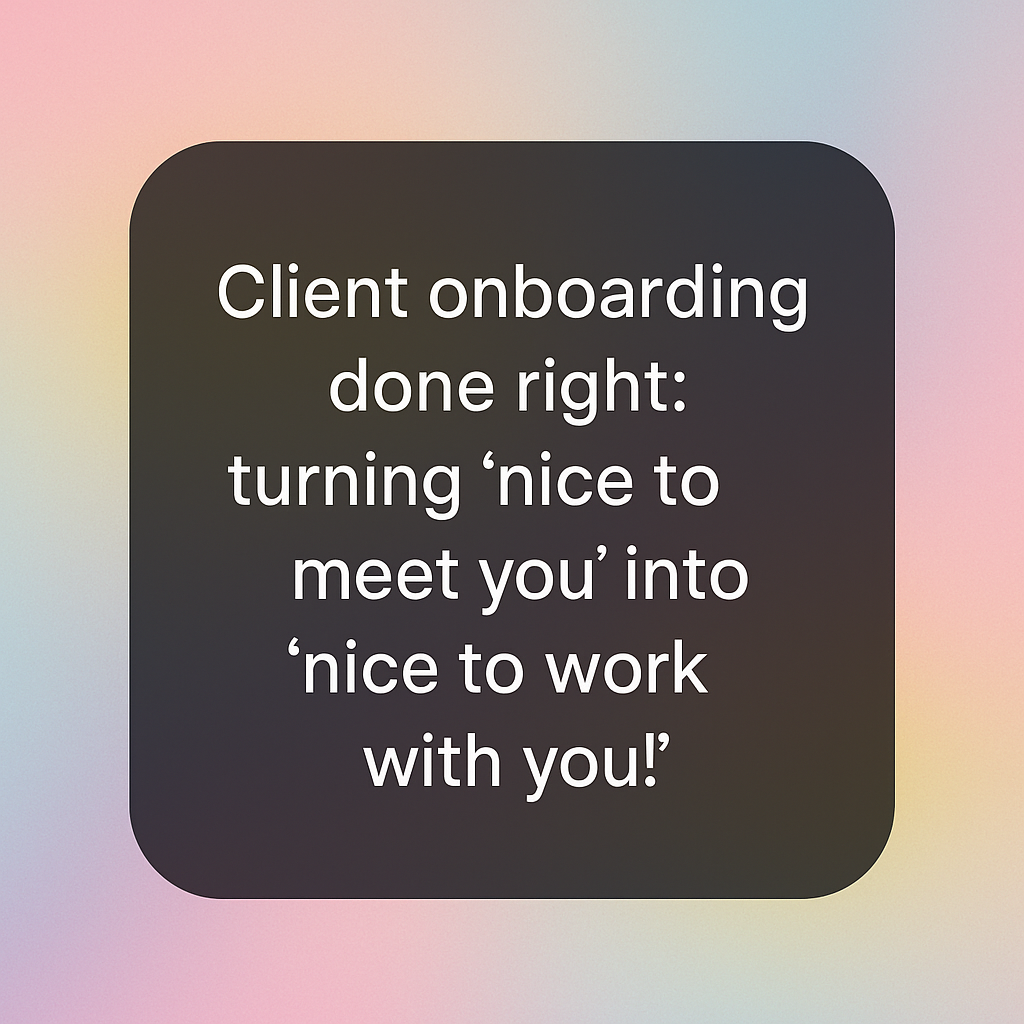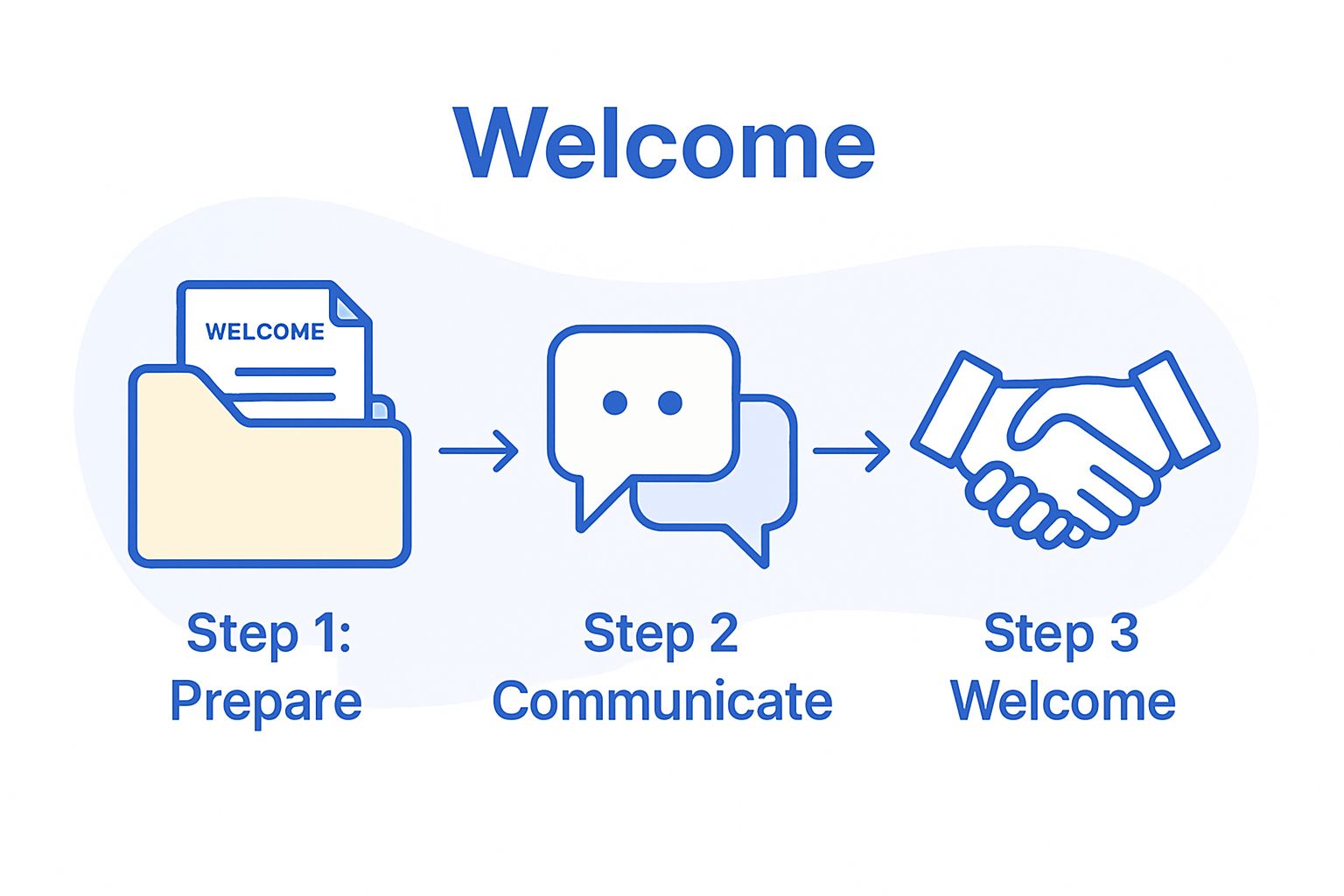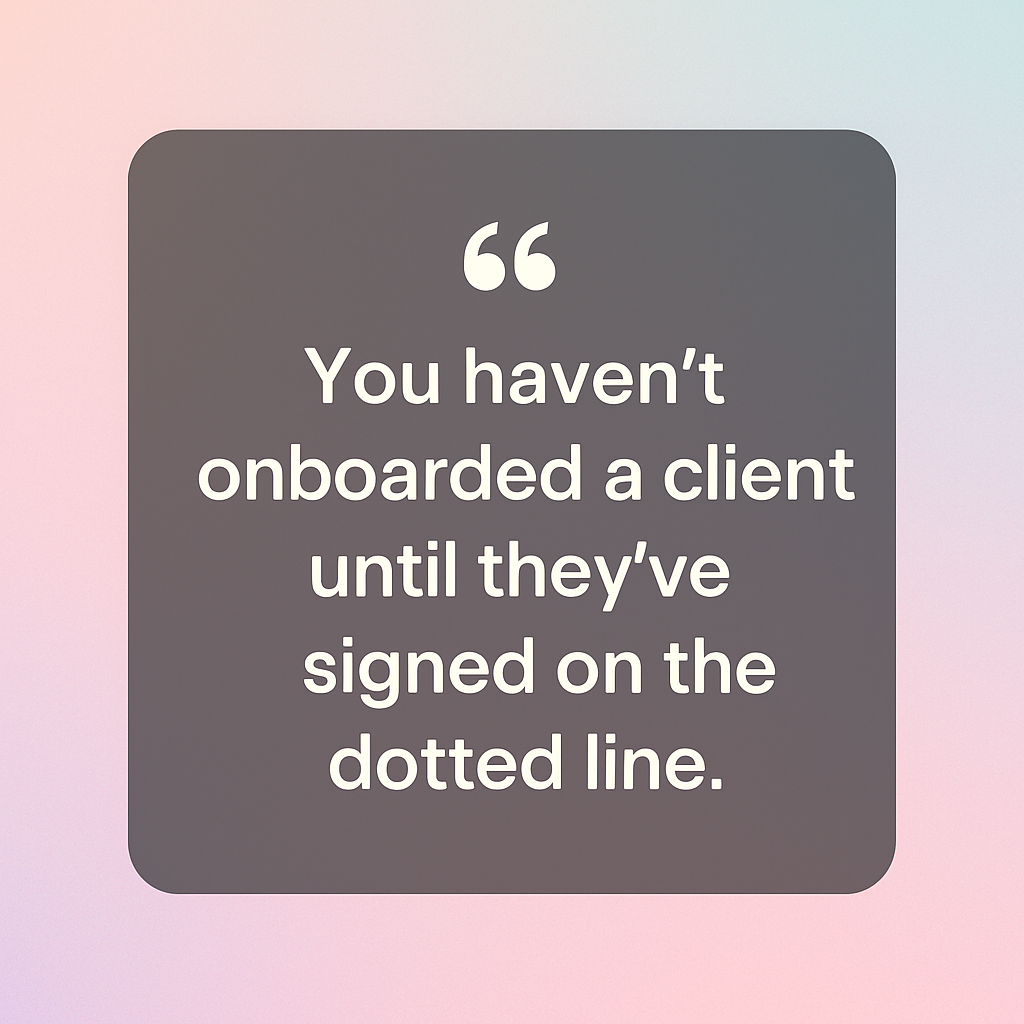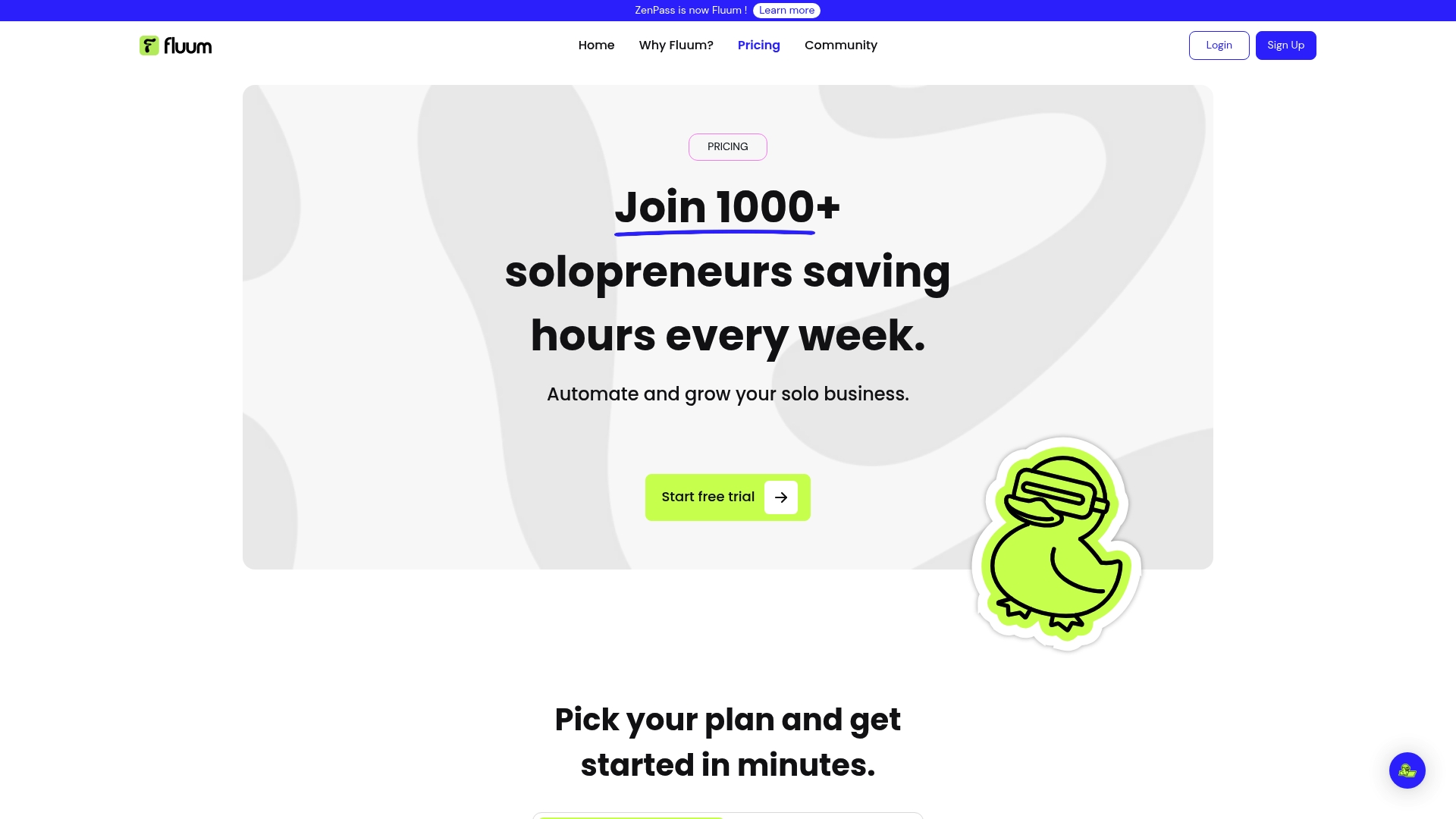
How to onboard clients effectively can make or break a professional relationship and the right materials can set the entire tone from day one. Most people think onboarding is just about sharing paperwork or checklists. But studies show that companies with a formal onboarding process achieve up to 50 percent higher client retention rates. That little detail changes everything because the real power of onboarding is about building trust and making your clients feel like partners before the real work even begins.
Table of Contents
- Step 1: Prepare Your Onboarding Materials
- Step 2: Set Up Client Communication Channels
- Step 3: Welcome Clients With A Personalized Introduction
- Step 4: Outline Goals And Expectations Clearly
- Step 5: Gather Necessary Information And Documentation
- Step 6: Review And Confirm Client Satisfaction Regularly
Quick Summary
| Key Point | Explanation |
|---|---|
| 1. Prepare Comprehensive Onboarding Materials | Create a well-structured onboarding packet that outlines services and sets expectations to enhance client trust and understanding. |
| 2. Establish Effective Communication Channels | Use professional communication tools and clearly define interaction protocols to ensure transparent and efficient client engagements. |
| 3. Personalize Your Client Welcome | Craft a genuine, tailored introduction to make clients feel valued, showing commitment to their unique needs and goals. |
| 4. Set Clear Goals and Expectations | Facilitate a goal-setting session to document specific objectives and mutual expectations for a successful partnership. |
| 5. Regularly Review Client Satisfaction | Implement ongoing feedback mechanisms to monitor satisfaction and adapt services based on client input, fostering long-term relationships. |
Step 1: Prepare Your Onboarding Materials
How to onboard clients successfully begins long before your first interaction. Preparing comprehensive onboarding materials establishes a professional foundation that communicates your commitment and sets clear expectations from the start. These materials serve as a roadmap, guiding clients smoothly through their initial experience with your services.
Your onboarding packet should be a carefully curated collection of resources that answer potential questions and provide immediate value. Start by creating a welcome document that introduces your business philosophy, highlights your unique approach, and outlines the journey clients can expect. This document should feel personal yet professional, reflecting your brand’s personality while providing practical information.

Include key documents that provide clarity and structure. A detailed service agreement that outlines scope, deliverables, timelines, and payment terms prevents misunderstandings and builds trust. Develop a comprehensive FAQ document addressing common questions clients might have about your process, communication protocols, and what they can expect during our collaboration. Learn more about creating effective client onboarding processes to refine your approach.
Consider creating digital resources that clients can reference independently. Video tutorials explaining your workflow, screen share presentations walking through initial steps, or interactive guides can significantly enhance the onboarding experience. These materials demonstrate your professionalism and provide clients with multiple ways to understand your services.
Personalization is crucial. While you want a standardized process, each onboarding packet should feel tailored to the specific client. Include sections where you can add individual notes or customize content based on their specific needs or industry. This approach shows you view each client as unique and are committed to their individual success.
Verify your onboarding materials are comprehensive by asking these key questions:
- Does the packet clearly explain your service process?
- Are all potential client questions addressed?
- Do the materials reflect your brand’s tone and values?
- Can a new client understand the full scope of your services?
By investing time in developing robust onboarding materials, you create a strong first impression that sets the stage for a productive, long-term client relationship.
Here is a checklist to help verify that your onboarding materials are thorough, client-focused, and set the right professional tone.
| Verification Item | What to Look For | Why It Matters |
|---|---|---|
| Service Process Explained | Materials clearly describe your workflow and steps | Prevents confusion and aligns client expectations |
| Client Questions Addressed | Common concerns and uncertainties are proactively answered | Builds trust and reduces repetitive inquiries |
| Reflects Brand Tone & Values | Consistent voice and branding throughout the documents | Reinforces professionalism and differentiates your service |
| Scope of Services is Clear | Deliverables, timelines, and boundaries are explicitly stated | Avoids misunderstandings and scope creep |
| Personalization Included | Opportunities to tailor content for individual clients | Makes clients feel valued and unique |
| Digital Access Provided | Materials are available as digital documents or resources | Allows clients to review information conveniently |
| Data Privacy & Security Stated | Information on how client data will be handled and protected | Instills confidence in your professional standards |
Step 2: Set Up Client Communication Channels
Establishing clear and efficient communication channels is the backbone of successful client relationships. This step transforms initial contact into a structured, professional interaction that sets expectations and builds trust from the first moment. Effective communication begins with selecting the right platforms and defining precise interaction protocols.
Choose communication tools that balance professionalism with accessibility. Professional platforms like Zoom for video meetings, Slack for instant messaging, or dedicated project management software create structured communication environments. These tools should offer reliability, security, and ease of use for both you and your clients. Learn more about optimizing client communication strategies to enhance your professional interactions.
Define communication boundaries and expectations early. Create a communication guide that outlines response times, preferred contact methods, and communication protocols. For instance, specify that emails will be answered within 24 hours, and urgent matters should be communicated via a specific channel. This transparency helps manage client expectations and prevents potential frustrations.
Consider implementing a welcome call or initial video consultation as part of your communication setup. This personal interaction allows you to understand client needs, explain your communication approach, and build initial rapport. During this call, walk through your preferred communication platforms, demonstrate how you will collaborate, and answer any initial questions.
Technology selection matters deeply.
Select platforms that integrate smoothly with your existing workflow and provide professional features like screen sharing, file transfer, and conversation history. Platforms that offer mobile and desktop accessibility ensure clients can reach you conveniently.
Verify your communication setup is comprehensive by checking these key points:
- Are communication platforms secure and professional?
- Have you clearly defined response times and communication protocols?
- Do your chosen tools integrate well with your business workflow?
- Can clients easily understand how to reach you?
By meticulously setting up communication channels, you create a foundation of trust, transparency, and professionalism that distinguishes your service from competitors.
The table below highlights key communication tools for client onboarding, their main features, and the unique benefits each brings to building strong professional relationships.
| Tool/Platform | Main Features | Benefit for Onboarding |
|---|---|---|
| Zoom | Video meetings, screen sharing, call recording | Enables face-to-face introductions and visual walkthroughs |
| Slack | Instant messaging, file sharing, channels | Facilitates fast, real-time team and client communication |
| Project Management Software | Task assignments, timelines, document tracking | Keeps onboarding tasks organized and accessible |
| Formal written communication, attachments | Documents agreements and provides a record of conversations | |
| Digital Intake Forms | Custom questions, secure submission | Streamlines the information gathering process |
| Secure File Transfer | Encrypted upload/download of sensitive documents | Protects client privacy during onboarding |
| Video Tutorials | Pre-recorded demos, step-by-step guides | Offers self-paced onboarding support and reduces repeat questions |
Step 3: Welcome Clients with a Personalized Introduction
The initial welcome sets the tone for your entire client relationship. A thoughtful, personalized introduction transforms a standard business interaction into a warm, engaging partnership. Your goal is to make clients feel genuinely valued and excited about working together.
Craft an introduction that goes beyond generic greetings. Research your client’s background, business, and specific needs before drafting your welcome message. This demonstrates your commitment and helps clients understand you view them as unique individuals, not just another transaction. Discover strategies to enhance client experience and build lasting connections.
Your welcome communication should accomplish multiple objectives simultaneously. Begin with a warm, enthusiastic greeting that reflects your brand’s personality. Acknowledge their specific challenges or goals, showing you have listened carefully during initial consultations. Share a brief narrative about how your services are specifically designed to address their unique situation.
Incorporate multimedia elements to make your introduction memorable. A personalized video message can dramatically improve client engagement compared to traditional text-based communications. Record a short welcome clip where you discuss their specific project, demonstrate your expertise, and express genuine excitement about collaborating. This approach transforms a standard introduction into an immersive, personal experience.
Timing and delivery matter significantly. Send your personalized welcome within 24 hours of initial agreement, while the client’s enthusiasm and interest are still high. Your communication should strike a balance between professional and approachable, using language that feels conversational yet refined.
Verify the effectiveness of your welcome by checking these key elements:
- Does the introduction feel personalized and genuine?
- Have you demonstrated understanding of the client’s specific needs?
- Is the communication clear, engaging, and reflective of your brand?
- Does the welcome inspire confidence and excitement?
A remarkable welcome introduction transforms a potential business transaction into the beginning of a meaningful professional relationship.
Step 4: Outline Goals and Expectations Clearly
Crystal clear goal setting is the foundation of successful client relationships. Without precise expectations, misunderstandings can quickly derail even the most promising partnerships. This step transforms abstract client desires into concrete, actionable objectives that provide a roadmap for mutual success.
Begin by scheduling a comprehensive goal-setting session that goes beyond surface-level discussions. Dig deep into your client’s ultimate vision, uncovering not just what they want to achieve, but why those goals matter. This approach demonstrates your commitment to understanding their broader business or personal context. Learn more about setting effective client expectations to elevate your professional interactions.
Document goals using a structured framework that breaks down larger objectives into specific, measurable milestones. Create a collaborative document that outlines key performance indicators, realistic timelines, and specific deliverables. This transparency eliminates ambiguity and provides a shared reference point throughout your engagement. Use clear language that avoids technical jargon, ensuring both parties understand every aspect of the proposed plan.
Establish explicit boundaries and communication protocols within your goal-setting process. Define what success looks like from both perspectives, including specific metrics, expected outcomes, and potential challenges. Discuss potential scenarios where adjustments might be necessary, creating a flexible yet structured approach to goal achievement.
Utilize visual tools to enhance goal comprehension. Develop simple charts, graphs, or timeline visualizations that make complex objectives more digestible. These visual representations help clients quickly understand the proposed journey and feel more connected to the proposed strategy.
Verify your goal-setting process by confirming these critical elements:
- Are goals specific, measurable, and time-bound?
- Have you created a shared understanding of expectations?
- Do both parties agree on success metrics?
- Is the plan flexible enough to accommodate potential changes?
A meticulously crafted goal-setting process transforms client relationships from transactional interactions into collaborative partnerships built on mutual understanding and shared vision.
Step 5: Gather Necessary Information and Documentation
Documentation serves as the backbone of a professional client relationship, transforming verbal agreements into concrete, actionable plans. The information gathering process is more than collecting paperwork it is about building a comprehensive understanding of your client’s unique needs and context.
Design a strategic information collection process that feels smooth and intentional. Create a digital intake form or comprehensive questionnaire that captures critical details while respecting your client’s time. Explore strategies for streamlining client information gathering to enhance your onboarding approach.
Develop a systematic approach to documentation that goes beyond standard templates. Request information through multiple channels to accommodate different client preferences. Some clients might prefer detailed written responses, while others might appreciate a video walkthrough or live interview. This flexibility demonstrates your commitment to personalized service and makes the information gathering process feel collaborative rather than bureaucratic.
Prioritize data security and privacy throughout the information collection process. Use encrypted digital platforms that protect sensitive client information. Clearly explain how you will use and store their data, building trust through transparency. Provide clear options for clients to review, modify, or restrict the information they share, giving them complete control over their personal and professional details.
Create a comprehensive information packet that guides clients through the documentation process. This packet should include clear instructions, explain the purpose of each requested document, and provide examples of preferred submission formats. Break down complex requirements into simple, digestible steps that reduce client anxiety and potential confusion.
Verify your information gathering process by checking these essential elements:
- Have you collected all necessary information?
- Is the documentation process clear and user-friendly?
- Are client data privacy and security fully addressed?
- Can clients easily understand and complete the required documentation?
A thoughtful, client-centered approach to information gathering transforms a potentially tedious process into an opportunity to demonstrate your professionalism and commitment to exceptional service.

Step 6: Review and Confirm Client Satisfaction Regularly
Client satisfaction is not a one-time achievement but an ongoing commitment that requires consistent attention and proactive engagement. Regular satisfaction reviews transform transactional relationships into long-term partnerships built on trust, communication, and continuous improvement.
Design a systematic approach to gathering client feedback that feels natural and non-intrusive. Implement a combination of formal and informal check-ins that provide multiple opportunities for clients to share their experiences. Discover advanced client management strategies to enhance your relationship-building techniques.
Create a structured feedback mechanism that goes beyond traditional satisfaction surveys. Develop dynamic conversations that invite genuine, nuanced insights about their experience. Schedule quarterly review calls where you not only discuss project progress but also explore evolving client needs, potential challenges, and opportunities for refinement. These conversations demonstrate your commitment to their success and provide valuable strategic insights.
Utilize technology to streamline satisfaction tracking. Implement digital tools that allow clients to provide real-time feedback, rate specific interactions, and share detailed observations. Choose platforms that make providing feedback simple and engaging, encouraging more comprehensive and honest responses. Automated follow-up systems can help you track response patterns and identify potential areas of improvement.
Respond to feedback with transparency and actionable commitment. When clients share concerns or suggestions, develop a clear action plan that addresses their specific points. Communicate the steps you will take, provide realistic timelines, and follow up to confirm resolution. This approach transforms potential negative experiences into opportunities to demonstrate your professionalism and dedication.
Verify the effectiveness of your satisfaction review process by assessing these key indicators:
- Are clients providing consistent, detailed feedback?
- Do you have a clear system for tracking and responding to input?
- Are you making tangible improvements based on client suggestions?
- Do clients feel heard and valued throughout the process?
A thoughtful, proactive approach to client satisfaction turns routine check-ins into powerful relationship-building opportunities that differentiate your service in a competitive marketplace.
Transform Your Client Onboarding With All-in-One Simplicity
Still struggling to manage all the moving pieces of client onboarding, from communications to document tracking and follow-ups? This article highlights the stress and inefficiency that solopreneurs and freelancers face when piecing together onboarding materials, juggling different communication tools, and keeping client satisfaction high. Without a streamlined process, you risk missed deadlines, unclear goals, and clients feeling lost instead of empowered.

Imagine an onboarding journey where everything you need lives in one place. With Fluum’s all-in-one platform, you can centralize your client management, automate personalized communications, and easily track key documents with no technical skills required. Benefit from integrated booking, payment, and marketing tools, plus ready-to-use templates that help you welcome new clients and set crystal clear expectations. Make your onboarding process stand out for professionalism and personal connection, enhancing client satisfaction at every step. Take action now and see how effortless your next client onboarding can be. Explore your options and start growing with Fluum today.
Frequently Asked Questions
What materials should I include in my client onboarding packet?
A comprehensive onboarding packet should include a welcome document, a detailed service agreement outlining scope and deliverables, an FAQ document addressing common questions, and optionally, digital resources like video tutorials or guides.
How can I establish effective communication with my clients during onboarding?
Choose professional communication tools like Zoom or Slack and define clear protocols for response times and preferred contact methods. Implement a welcome call to discuss these channels and build rapport.
Why is personalizing the client onboarding process important?
Personalization shows clients that they are valued and unique. Tailoring onboarding materials to each client’s specific needs demonstrates your commitment to their success and fosters a stronger professional relationship.
How often should I review client satisfaction after onboarding?
Regular satisfaction reviews should be conducted through formal and informal check-ins, ideally on a quarterly basis. This ongoing engagement helps address client needs and improve your services based on their feedback.
Recommended
- Fluum | Master Managing Multiple Projects for Success
- Fluum | Build Your Brand with a Branding Builder in 2025
- Fluum | 7 Customer Retention Examples to Boost Your Business
- Fluum | Understanding Content Marketing Providers: Their Role and Impact
- Fluum | Understanding What is a Sales Funnel and How It Works



